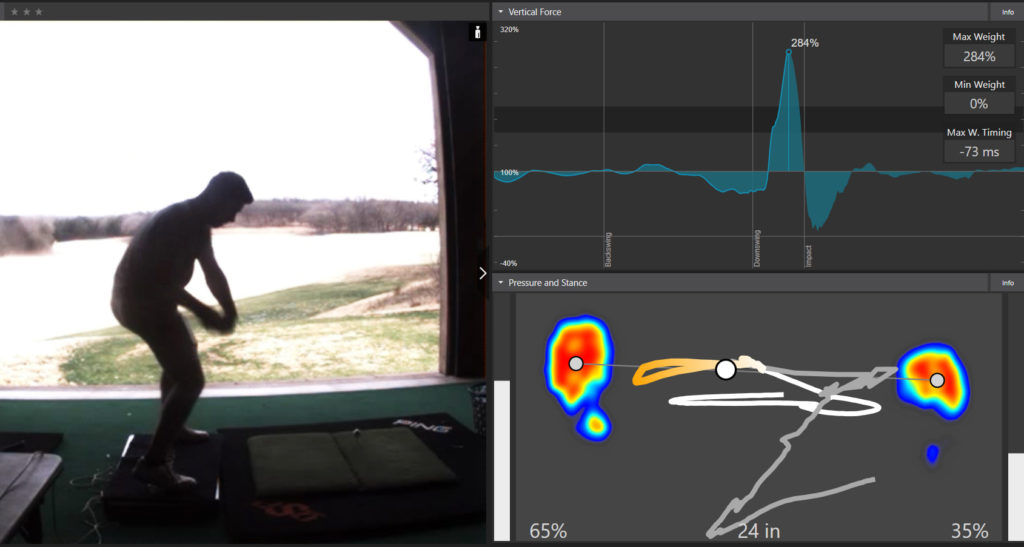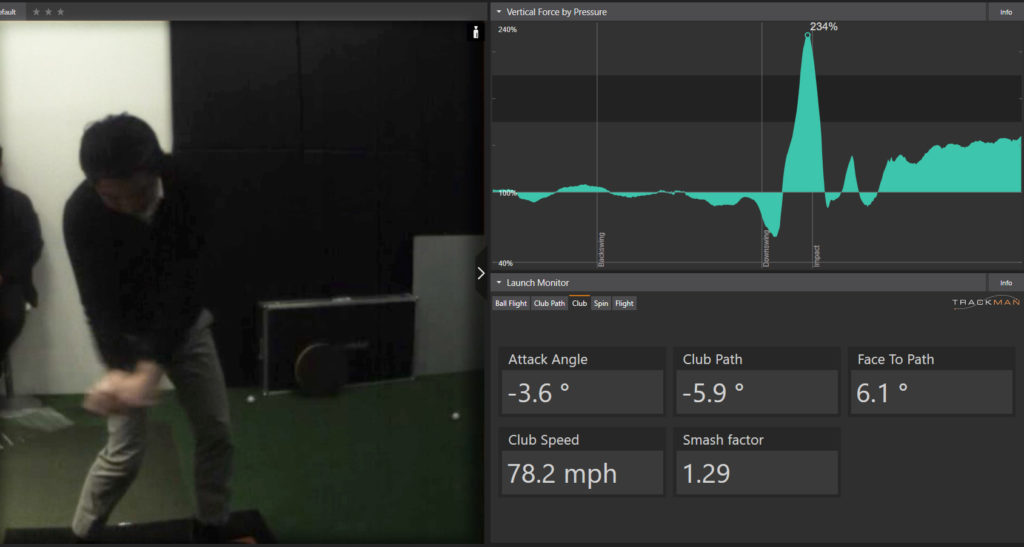Increased Vertical Forces = Increased carry distance, or?
There has been much talk about vertical forces recently in golf instruction. Many players such as Justin Thomas, Bubba Watson and Lexi Thompson use these forces to literally jump off the ground, and all of them are extremely long hitters. So, does this mean that all golfers should aim to maximize their vertical forces?

The most vertical forces I have ever measured on the Swing Catalyst 3D Motion plate happened just recently in my visit to Stillwater, Oklahoma to visit with coach Alan Bratton and his staff/players at their amazing facility. Freshman Matthew Wolff is one of the longest hitters in the NCAA and was easily carrying drivers 300+ yards. His vertical forces were the most I have ever seen measure, at 284% of his body weight which is around 500 lbs of vertical force.

In the past, many would have tried to correct this use of vertical forces and get players to keep their feet flat on the ground throughout the swing. Removing this vertical force would rob these players of one of their essential power sources and cost them club head speed and swing efficiency.
However, one must be cautious when teaching/coaching vertical forces. These forces, as with anything in golf mechanics, are not for everyone. At a recent Swing Catalyst event in Tokyo, Japan, the following player had their swing recorded on the Swing Catalyst Balance Plate 3. After taking several warm up swings, the following screenshot shows this player’s vertical force and launch monitor numbers hitting a 7 iron.

These large vertical forces were not optimal for this player
This player had an extremely large amount of vertical force (especially for an iron swing – where vertical forces are generally lower than with driver swings) as he produced 234% of his body weight. Although these forces were not optimally timed, the magnitudes were still well above the average of the PGA tour.
After screening this player to determine his optimal lower body power source, it was hypothesized that these large vertical forces were not optimal for this player, so he was given some cues to alter his mechanics slightly. The result is below:

Reduced vertical force, better timed
As you can see, the vertical forces were very much reduced to 175% and were slightly better timed. This resulted in an increase in club head speed of close to 6 miles per hour and a much more solid strike. Clearly these extremely large vertical forces were not optimal for this player. This should make it clear that the goal is not always to maximize all forces in all players and we must tune these forces to each individual player.
To learn about using pressure and GRF information in golf instruction, keep up to date on the Swing Catalyst Learning Center for online Level 1 and in person Level 2 seminars.
Scott K. Lynn, PHD
Swing Catalyst Research and Education Director
